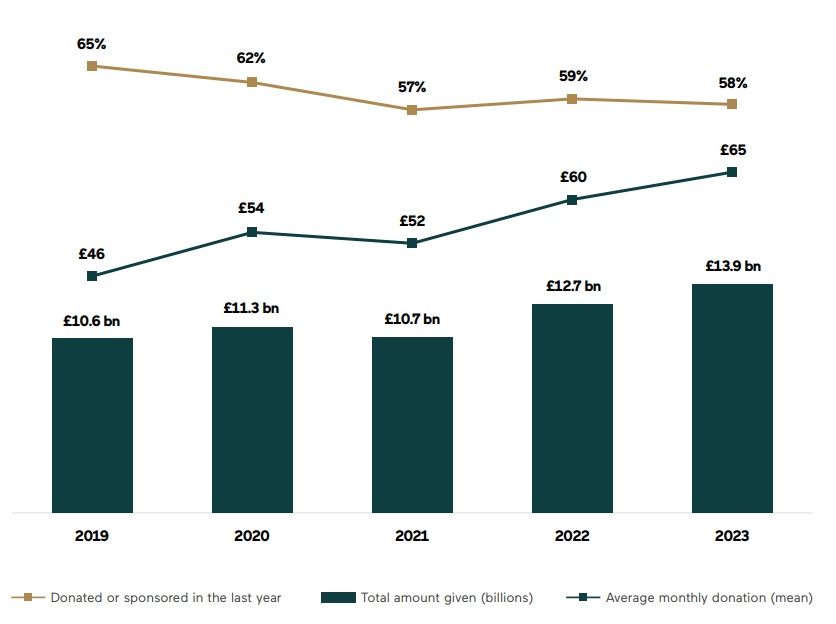Charities in the UK received an estimated £13.9bn-worth of donations last year from a smaller pool of donors, according to new figures.
The £1.2bn annual increase was driven by some people giving larger amounts, rather than by more people giving to charity, according to the Charities Aid Foundation’s (CAF) UK Giving Report 2024.
It estimates that 58% of people donated or sponsored in the past 12 months, compared to 59% in 2022 and 65% in 2019, the last year before the Covid-19 pandemic.
Larger gifts pushed the average (mean) monthly donation up to £65 in 2023, compared to £60 in 2022 and £47 in 2019.
But the typical (median) donation remained at £20, unchanged for the seventh year in a row, and worth less in real terms due to inflation.

For the first time, the report also estimated how much each parliamentary constituency of the UK gave to charities.
It reported that some of the least affluent areas in the UK were among the most generous last year, with those in Scotland, Wales and Northern Ireland over-represented when compared to England.
Sheffield Hallam was the most generous, according to the report, with people donating 3.2% of their income to charity, while those in the new constituency boundary of Kensington and Bayswater donated 0.5% of their household incomes.
CAF chief executive Neil Heslop said the research showed “how we can come together, to give more to causes that matter to us, even when times are tough”.
“But it’s concerning that we’re relying on a dwindling group of regular givers, and the typical donation is static and eroded by inflation,” he said.
“That’s why we need to foster a more widespread and sustainable culture of giving to support charities that are squeezed from all sides.
“Government can set the tone by committing to drawing up a national strategy for philanthropy and charitable giving, ideally as part of a renewed approach to the whole of civil society in every part of the UK.”












